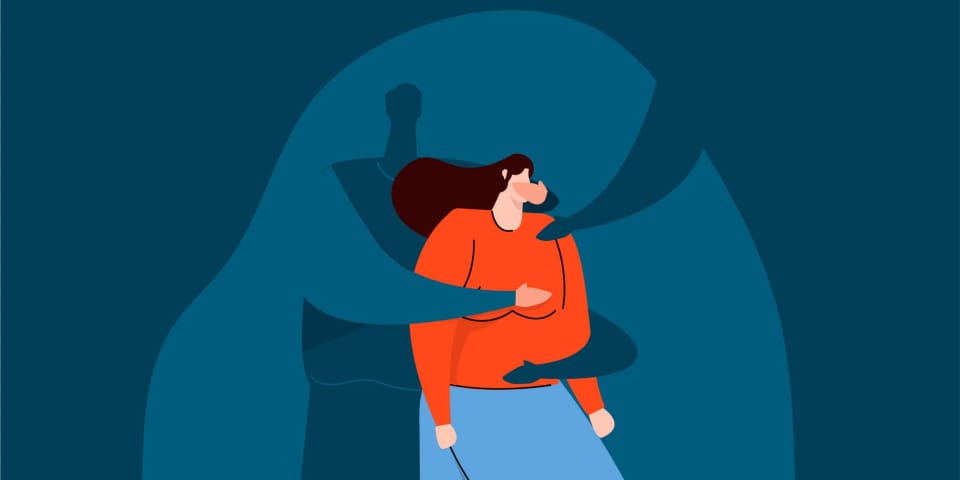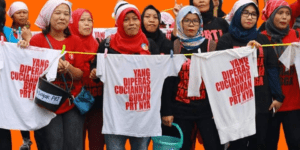Regarding ‘clothing assault’, an Indonesian Twitter user shares her experience after getting catcalled. While, she’s on the way to the nearest station. In her tweets, she’s promptly checking on her clothes using her phone’s camera. At that moment, she was worried that her jacket’s zipper was open accidentally. Nevertheless, she found out that she was literally wearing unrevealing clothes. And also, implausibly still got catcalled by some man on the streets that she was passing by.
Her tweet went viral and got a lot of responses. Most of the responses come from women themselves reassuring her by sharing similar awful experiences. They speak up because they have been the victim of slut-shamed phenomenon. While what they wear adheres to dress mannerism. Somehow, it proved Indonesia is not a walkable country for women due to the lack of safety.
I found one user’s disheartening confessions that she almost got kidnapped and sexualized. Just because she was being kind by helping a stranger. Erstwhile when she was on the KRL, a man approached and asked her whether or not he’s on the right train to Manggarai. She reassured the man that he was on the right track to that way. He attempted to have a small talk and the conversation sluggishly became nasty. He was making that girl uncomfortable by asking private matters that shouldn’t be talked about. Especially, if they were barely just met.
ALSO READ: KUPI Supports Protection for Victims of Sexual Violence
Started with the question “Do you have a boyfriend?” “Do you live alone?” he proceeded to stalk that girl afterwards, but she slipped away. It’s distressing when society still makes women to be hyper aware in public, no matter if it was day or night. Because it’s what women have been conditioned to act by other women’s stories or by their own experiences.
The sexual harassment in the street is still cyclical. There’s no space for women to feel safe. Women’s movement can’t be bigger due to the reason how excruciating male gaze will sexualize them. No matter how women act or dress.
Clothing Assault Allegation
Unfortunately, we’re still living in a sexual victimization circumstance that when it comes to sexual harassment cases. The first question pops up in peoples’ minds is, “What did she wear at that time?”
Why are some of us still tone-deaf of sexual victimization? That’s what I often think everytime I read any sexual harassment thread on social media. Rather than being emphatic first, some internet users barely judge by what they see without putting more perspective on it. It was deeply regrettable to see the comment section blaming the victim still exists until these days. Sadly, the utilize of smartphone isn’t gone along with the increment of user’s awareness on how unsafe it is to cultivate faulting the victim’s clothes in each case of sexual harassment. Indeed it tends to be tolerated.
“A sex offender always craves to commit a crime whenever they get a chance. Therefore, an attention for women out there to always look at the way you dress up! You are expecting the beast to eat you up.”
There’s no association found between whether a woman wore revealing clothes and her chance to be catcalled. Catcalling culture implicitly already made the society normalizing to commiserate with the catcallers intention for doing so and shift the blame onto the victim.
Clothing manners doesn’t make a huge difference and people constantly perpetuating the myth are damaging victims of sexual viciousness even further. It’s woeful when sexual victimization beliefs still haunt us in so many years.
ALSO READ: Bombshell, The Story of Sexual Harassment of Women Media Workers
Commissioner of National Commission on Violence against Women Indonesia, Siti Aminah Tardi, considers patriarchy degrades the myth that what happens to women and it caused by men will be considered as women’s fault who are unable to prevent the men’s actions. She gave her statement that in a decade there were 45,000 cases of sexual harassment that were reported to National Commission on Violence against Women Indonesia and it was stated that not all victims wore revealing clothes.
Safe Public Space Coalition survey’s published that clothing is not a determinant of victims experiencing sexual harassment. The data recorded the clothes worn by the victims, long skirts and trousers (17.47%), long sleeves (15.82%), school uniforms (14.23%), loose clothing (13.80%), short or medium hijab (13.20%), short sleeves (7.72%), office uniforms (4.61%), long hijab (3.68%), and knee-length skirts or pants (3.02%). Furthermore, those who wore tight shirts or pants were (1.89%) and (0.17%) veiled.
The results of this survey already show us that there are a total of 17 percent of women wearing the hijab experiencing sexual harassment. It makes clear women’s clothing can’t be a strong reason for giving perpetrators excuse to do sexual harassment.
“Wearing certain clothes makes you more likely to be raped or get catcalled. Perhaps you get assaulted because you wore provocative clothes.”
Based on the viral tweets at the beginning, it already showed us how clothing won’t make an iota of difference from a practical realisation. The cold hard truth women should encounter is people taking the onus away from where it belongs and diluted the blame applied to the catcallers.
ALSO READ: #MeToo on TikTok: Teens Use Viral Trend to Speak out About Their Sexual Harassment
Instead of being willing to be on the victim’s side, people have gone on to blame catcalling victims when the blame should belong to the catcallers. Accusing the sexual harassment victim because of the clothes they put on is a way. If dissipating the grave resentment to the catcallers and surpress the voice of the victims who are still gathering enough strength to speak up and battle for their rights.
Law on the Crime of Sexual Violence, known as the TPKS Law, intended capable to protecting the rights of victims of sexual harassment and perpetrator can be punished according to the relevant statutory articles. In this case, catcalling can be categorized as non-physical or verbal sexual harassment.
Referring to Law Number 12 of 2022 concerning Crimes of Sexual Violence (TPKS). It prohibits catcalling and other non-physical sexual harassment. Other laws that regulate punishment for perpetrators is Criminal Code (KUHP) that associated catcalling with immoral acts and obscenity.
And clearly violates the laws and regulations Article 8 in conjunction with Article 34 and Article 9 in conjunction with Article 35 of Law no. 44/2008 concerning Pornography, and Article 5 of Law no. 12/2022 concerning Crimes of Sexual Violence.
Hopefully, with the passage of Law on the Crime of Sexual Violence against sexual harassment perpetrators can provide victims the courage. It’s to follow up on the reports and create a deterrent effect that catcalling is not something to be underestimated. Something that is uncomfortable. And is considered insulting rather than being regarded as a compliment.













